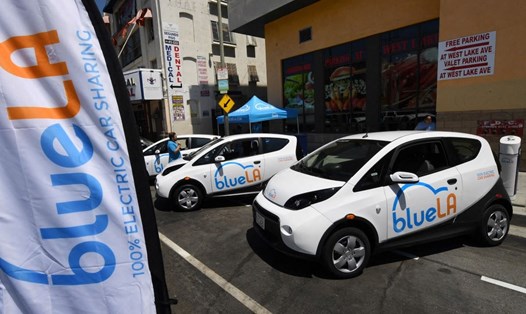US private businesses rush to invest in electric truck charging stations
Although still a small market, medium- and heavy-duty electric trucks have begun operating in the US, gradually replacing diesel-powered freight trucks.
Hundreds of millions of dollars have been funded through state and federal programs, helping to spur spending to develop EV chargers for heavy-duty electric trucks, according to Bloomberg.
Greenlane Infrastructure, a $675 million joint venture between Daimler Truck North America, NextEra Energy Resources and a BlackRock fund, has broken ground on the main site of a planned 280-mile commercial charging corridor between Los Angeles and Las Vegas. TeraWatt Infrastructure has raised more than $1 billion from investors including Vision Ridge Partners to build a network of heavy-duty charging stations connecting California’s Port of Long Beach to El Paso, Texas.
WattEV, backed by Apollo Global Management Group and Vitol, is also operating several charging stations and has 15 more “funded and ready to deploy across the entire West Bank,” said Salim Youssefzadeh, WattEV’s chief executive.
Private companies are rushing to invest in this lucrative pie. “We’re seeing the industry investing in new charging stations, projects that go beyond the pilot phase,” said Erika Myers, executive director of the North American Charging Interface Initiative, an advocacy group whose members span the entire EV charging supply chain, from energy companies to automakers.
For countries and states looking to cut carbon emissions, electrifying the medium- and heavy-duty trucking industry may seem like a no-brainer. These big trucks account for nearly a quarter of the U.S. trucking industry’s greenhouse gas emissions. But the latest data shows that medium- and heavy-duty electric trucks accounted for about 6% of electrified commercial vehicles sold in the U.S. in June. Fewer than 1,000 zero-emission trucks were sold in the U.S. in the first half of 2024.

Race to build charging stations with waiting rooms
This summer, Rivian Automotive transformed an old blacksmith shop outside Yosemite National Park into an electric charging lounge where drivers can sip free coffee while making their own snack mixes from the ingredients bar. Or they can lounge on furniture made from used sleeping bags and read books in the on-site library. There’s even a large display of climbing routes on Yosemite’s famous El Capitan cliff.
The transition to charging could be an opportunity to completely reimagine the refueling experience, says Christopher Hawthorne, a senior curator at the Yale School of Architecture. The design and location of gas stations have remained largely unchanged for decades, but electric vehicle charging facilities don’t necessarily follow the same rules.
According to a survey by climate research group Next 10 and the University of California, Davis, the use of public chargers nearly triples when they are located near food services. California drivers are 37 percent more likely to choose charging locations with amenities than standalone locations, the authors added.
At the same time, companies and urban planners designing charging stations today should expect that the time it takes to fully charge a battery will likely decrease as technology improves. So while the airport lounge approach is the current trend, companies need to keep an eye on the future.










